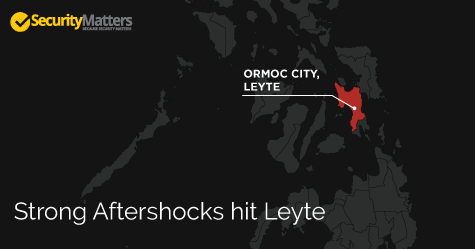On 6 July 2017, Leyte was hit with a magnitude-6.5 earthquake—with an epicenter located 15.5 kilometers northeast of Ormoc City—that left at least two people dead and approximately 200 wounded. Over a thousand houses were partially damaged and 700 were completely ruined, and the authorities continue to conduct assessments gauging net damage, alongside emergency and rehabilitation measures. Electricity services have yet to be fully restored.
The casualties of the earthquake were an 18-year-old woman who got hit by falling debris in epicenter Ormoc City, and a citizen in the mountainous municipality of Kananga who had died in the collapse of a commercial building. The local government of Leyte had deployed some 50,000 emergency workers for disaster response and survivor retrieval in Kananga alone.
The area has since experienced over 500 aftershocks since the original tremblor. The strongest among them occurred nine kilometers southeast of Ormoc City on the morning of10 July 2017, measuring at a considerable 5.8 magnitude. This was immediately followed by two more aftershocks, a magnitude-3.3 and a magnitude-3.2.
The public had been warned by the Philippine Institute of Volcanology and Seismology (PHIVOLCS) in the immediate aftermath of the quake that damage and aftershocks were expected. PHIVOLCS is calling on residents to conduct resilience assessment on their houses, in light of reports that residents are refusing to leave their homes in high-risk areas.
Related story: What to do before, during, and after an earthquake.
PHIVOLCS has also increased research and investigation in the site, and has recently pinpointed the ground rupture that caused the earthquake to lie in Barangay Tongonan in Ormoc. PHIVOLCS personnel are conducting studies on the ground rupture, but Science and Technology Undersecretary Renato Solidum Jr.—officer in charge of the bureau—estimates that with the earthquake’s magnitude and its strong aftershocks, the rupture could very well stretch some 20 kilometers across the area.
The earthquake, says PHIVOLCS, was generated by the movement of the Leyte Segment of the Philippine Fault. Eastern Visayas is one of the seismically active areas in the country because of the Philippine Fault and the Philippine Trench, and other local faults are potential causes of small- to large-magnitude earthquakes.
The PHIVOLCS team deployed to Leyte has also been monitoring coastal and fault movements and associated earthquake hazards.






